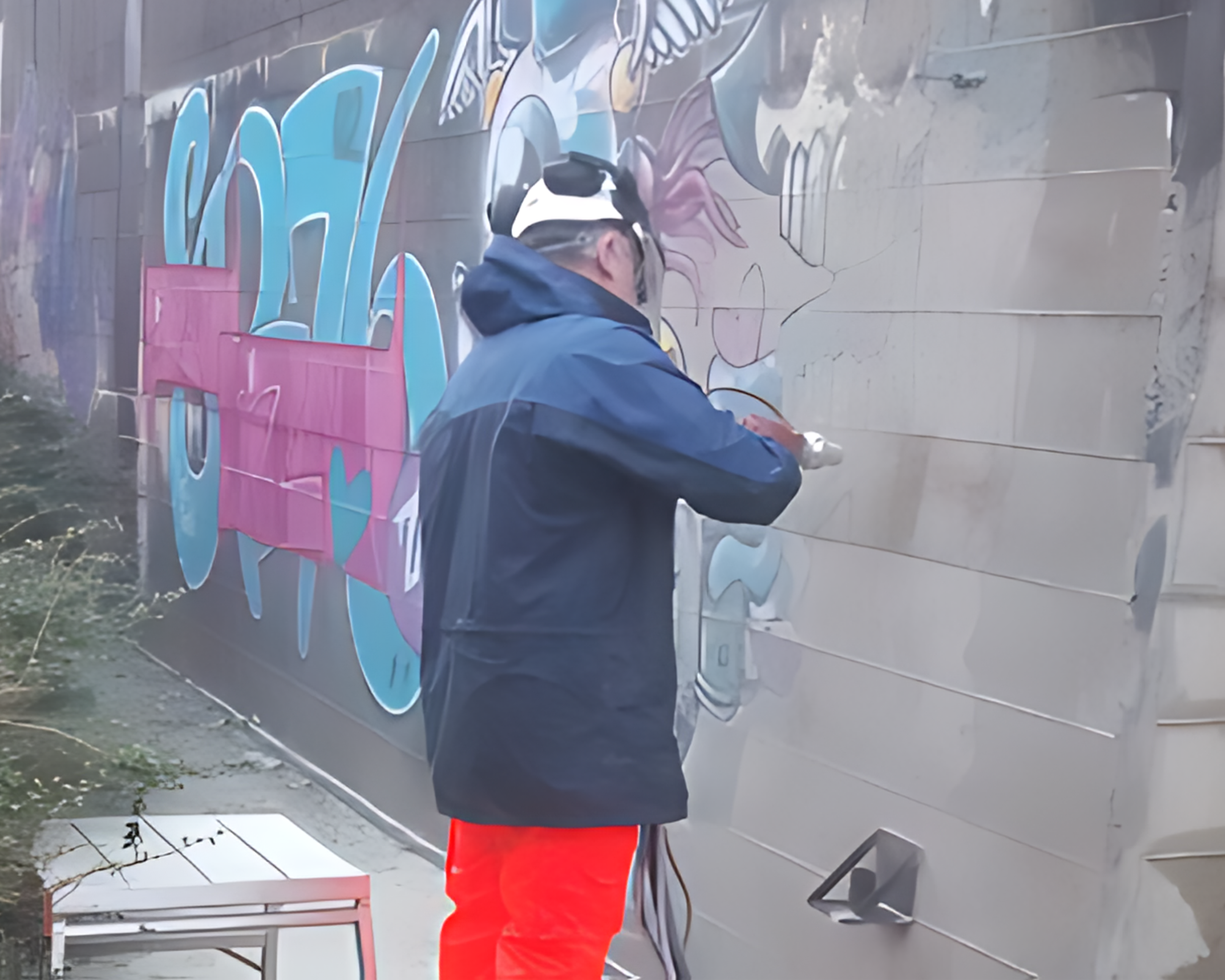
The Power of Sandblasting Removing Graffiti from Antique Brick and Stone

Graffiti can be a serious problem, especially when it defaces antique brick and stone structures. These historic materials require careful and effective cleaning methods to preserve their integrity and beauty. Sandblasting has emerged as one of the most effective techniques for removing graffiti from these surfaces. In this comprehensive guide, we will explore how sandblasting works, the benefits it offers, and the considerations necessary to ensure it is done safely and effectively on antique brick and stone.

Understanding Sandblasting
Sandblasting, or abrasive blasting, involves propelling fine particles at high velocity against a surface. This process effectively cleans the surface by removing unwanted materials such as paint, rust, or in this case, graffiti. The choice of abrasive material and the pressure used can be adjusted to suit the specific surface, making sandblasting a versatile solution for various cleaning challenges.
The Challenge of Removing Graffiti from Antique Brick and Stone
Antique brick and stone structures are often valuable not only in terms of monetary worth but also due to their historical and cultural significance. When graffiti defaces these materials, it is essential to remove it without causing damage. Traditional cleaning methods may be too harsh or ineffective, leading to potential harm to the delicate surfaces of antique structures. Sandblasting offers a solution that can be both gentle and effective, preserving the integrity of the materials while

Effective Cleaning
Sandblasting is highly effective at removing graffiti, even when it has deeply penetrated the porous surfaces of brick and stone. The high-pressure abrasive particles can reach into the crevices and pores, ensuring a thorough clean that other methods might miss.
Preservation of Surface Integrity
When done correctly, sandblasting can remove graffiti without damaging the underlying brick or stone. This is crucial for maintaining the historical value and structural integrity of antique buildings. By carefully selecting the appropriate abrasive material and pressure settings, professionals can tailor the sandblasting process to the specific needs of the surface.

Quick and Efficient
Compared to manual cleaning methods, sandblasting is remarkably efficient. It significantly reduces the time required to remove graffiti, making it an ideal choice for large surfaces or situations where a quick turnaround is necessary.
Environmentally Friendly
Sandblasting typically uses natural, non-toxic materials such as sand, glass beads, or baking soda. These materials are environmentally friendly and do not produce harmful chemicals or residues, making sandblasting a safe choice for graffiti removal in urban and natural environments.

Choosing the Right Abrasive Material
The success of a sandblasting project depends heavily on selecting the right abrasive material. Here are some options commonly used for cleaning antique brick and stone:
Crushed Glass: Provides a gentle but effective clean, suitable for delicate surfaces.
Baking Soda: A soft abrasive that is ideal for light cleaning and delicate surfaces, minimizing damage.
Walnut Shells: Gentle enough to clean without etching the surface, making it suitable for historic structures.
Aluminum Oxide: More aggressive, used for tougher graffiti but must be used with caution on antique materials.

Safety Considerations in Sandblasting
While sandblasting is effective, it must be done with care to ensure safety and avoid damaging the antique materials. Here are some key considerations:
Professional Expertise
Hiring professionals with experience in sandblasting antique brick and stone is crucial. They can assess the condition of the surfaces and determine the best approach, ensuring that the cleaning process does not cause harm.
Protective Measures
Operators should use appropriate protective gear, including gloves, goggles, and respirators, to protect themselves from the abrasive particles and dust. Additionally, surrounding areas that do not require cleaning should be masked off to prevent unintended damage.
Pressure Control
Careful control of the blasting pressure is essential. Too much pressure can damage the antique surfaces, while too little may not effectively remove the graffiti. Professionals will adjust the pressure to suit the specific requirements of the job.

Conclusion
Sandblasting is a powerful and effective method for removing graffiti from antique brick and stone. By choosing the right abrasive materials and employing professional expertise, it is possible to clean these valuable surfaces without causing damage. Sandblasting offers a quick, efficient, and environmentally friendly solution to graffiti, ensuring that historic buildings can be restored to their former glory while preserving their cultural and historical significance. If you are facing the challenge of graffiti on antique structures, consider the benefits of sandblasting for a safe and effective cleaning solution.





